
This story originally appeared on Self.
Women’s labor force participation has grown significantly in the last 70 years; while men still outnumber women in the workforce, the gap has narrowed considerably. More women than ever are pursuing higher education, and, in fact, women have earned the majority of college degrees for the past few decades. Despite this progress, however, a sizable gender pay gap between men and women remains. The latest data from the U.S. Census Bureau shows that women earn, on average, just 81 cents for every dollar earned by a man. That is, the ratio of annual earnings for full-time working women to full-time working men is 81 percent — a pay gap of 19 percent.
The gender pay gap has been shrinking steadily until recent years. In 1979, full-time women earned just 62 percent of what full-time men earned, but over the next 30 years that number had risen to 80 percent. After decades of improvement, however, the ratio of women’s earnings to men’s earnings has remained relatively stable, hovering just above 80 percent. While some of the remaining gap can be explained by factors such as occupational segregation and work experience, other factors that are difficult to quantify and measure, including discrimination, also play a role.
Gender pay gap varies by occupation and industry

While the ratio of women’s earnings to men’s is about 81 percent, on average, this ratio varies considerably across occupations and industries. Legal occupations have the largest gender pay gap, with women in legal occupations earning just 55 percent of what men in legal occupations earn. However, much of this pay discrepancy can be explained by the disproportionate share of women working in lower-paying legal jobs — for instance, as paralegals or legal assistants. Men, on the other hand, are much more likely than women to be lawyers. Health practitioners have the second-largest gender pay gap, with women earning about 65 percent of what men in the field earn.
At the industry level, the finance and insurance industry has the largest gender pay gap, with women in this industry earning 59 cents on the dollar. Occupational sorting by gender, or the job choices that men and women make, in the finance and insurance industry likely explains a significant portion of the pay gap in this industry. Women are more likely to work as lower-paid bank tellers while men more frequently work as financial advisers. The reasons behind occupational segregation by gender are complicated, but experts cite gender differences in preferences, social norms, and discrimination as key drivers.
The gender pay gap varies widely on a geographic basis as well. In some cities and states, women tend to earn much less than men, while in others, women’s pay is more equitable. At the state level, Wyoming and Utah have the most significant gender pay gaps, with women earning just 63 percent and 70 percent of men’s earnings, respectively. Female workers in Maryland and Vermont are compensated more equitably compared to their male counterparts. In these states, women earn 88 percent and 91 percent of men’s earnings, respectively.
Cities with the biggest gender pay gap

To find the cities with the biggest gender pay gaps, researchers at Self Financial analyzed the latest data on earnings from the U.S. Census Bureau. The researchers ranked metro areas according to the ratio of full-time working women’s earnings to full-time working men’s earnings. Researchers also calculated median annual earnings for full-time women, median annual earnings for full-time men, the industry with the largest wage gap, and the occupation with the largest wage gap.
To improve relevance, only metropolitan areas with at least 100,000 people were included in the analysis. Additionally, metro areas were grouped into the following cohorts based on population size:
- Small metros: 100,000–349,999
- Midsize metros: 350,000–999,999
- Large metros: 1,000,000 or more
Keep reading for the large metros with the biggest gender pay gaps.
15. Denver-Aurora-Lakewood, CO
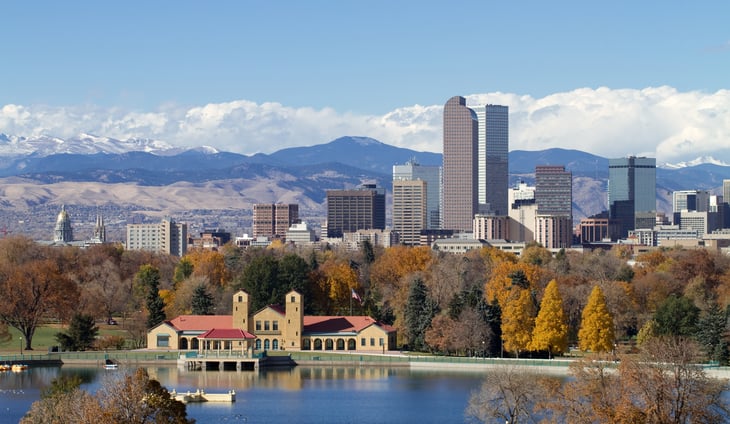
- Women’s earnings as a percentage of men’s: 79.6%
- Median annual earnings for full-time women: $51,436
- Median annual earnings for full-time men: $64,650
- Industry with the largest wage gap: Management of companies and enterprises
- Occupation with the largest wage gap: Farming, fishing, and forestry occupations
14. Cleveland-Elyria, OH

- Women’s earnings as a percentage of men’s: 79.6%
- Median annual earnings for full-time women: $43,685
- Median annual earnings for full-time men: $54,885
- Industry with the largest wage gap: Management of companies and enterprises
- Occupation with the largest wage gap: Firefighting and prevention, and other protective service workers including supervisors
13. Birmingham-Hoover, AL
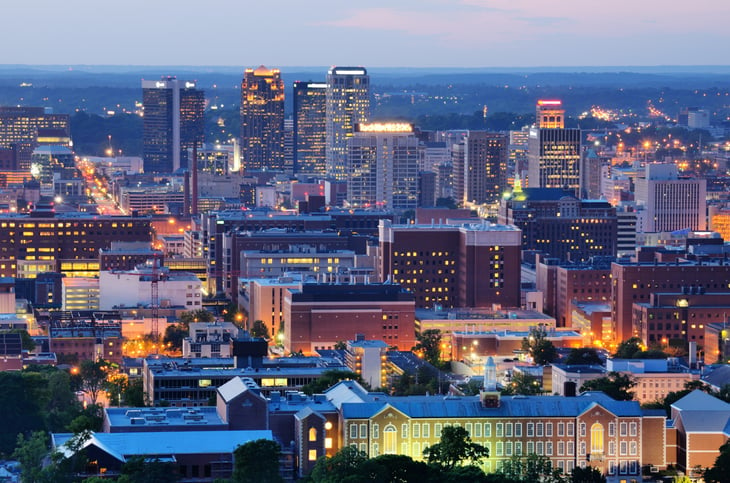
- Women’s earnings as a percentage of men’s: 79.6%
- Median annual earnings for full-time women: $41,959
- Median annual earnings for full-time men: $52,709
- Industry with the largest wage gap: Agriculture, forestry, fishing, and hunting
- Occupation with the largest wage gap: Firefighting and prevention, and other protective service workers including supervisors
12. Cincinnati, OH-KY-IN

- Women’s earnings as a percentage of men’s: 78.9%
- Median annual earnings for full-time women: $45,224
- Median annual earnings for full-time men: $57,351
- Industry with the largest wage gap: Agriculture, forestry, fishing, and hunting
- Occupation with the largest wage gap: Legal occupations
11. Austin-Round Rock-Georgetown, TX

- Women’s earnings as a percentage of men’s: 78.4%
- Median annual earnings for full-time women: $47,530
- Median annual earnings for full-time men: $60,591
- Industry with the largest wage gap: Management of companies and enterprises
- Occupation with the largest wage gap: Firefighting and prevention, and other protective service workers including supervisors
10. New Orleans-Metairie, LA

- Women’s earnings as a percentage of men’s: 78.3%
- Median annual earnings for full-time women: $40,361
- Median annual earnings for full-time men: $51,549
- Industry with the largest wage gap: Agriculture, forestry, fishing, and hunting
- Occupation with the largest wage gap: Transportation occupations
9. Oklahoma City, OK

- Women’s earnings as a percentage of men’s: 77.3%
- Median annual earnings for full-time women: $39,697
- Median annual earnings for full-time men: $51,370
- Industry with the largest wage gap: Agriculture, forestry, fishing, and hunting
- Occupation with the largest wage gap: Firefighting and prevention, and other protective service workers including supervisors
8. Virginia Beach-Norfolk-Newport News, VA-NC

- Women’s earnings as a percentage of men’s: 77.2%
- Median annual earnings for full-time women: $42,033
- Median annual earnings for full-time men: $54,415
- Industry with the largest wage gap: Information
- Occupation with the largest wage gap: Legal occupations
7. Indianapolis-Carmel-Anderson, IN

- Women’s earnings as a percentage of men’s: 76.5%
- Median annual earnings for full-time women: $42,098
- Median annual earnings for full-time men: $55,064
- Industry with the largest wage gap: Management of companies and enterprises
- Occupation with the largest wage gap: Legal occupations
6. Pittsburgh, PA

- Women’s earnings as a percentage of men’s: 76.3%
- Median annual earnings for full-time women: $45,496
- Median annual earnings for full-time men: $59,601
- Industry with the largest wage gap: Management of companies and enterprises
- Occupation with the largest wage gap: Legal occupations
5. Seattle-Tacoma-Bellevue, WA
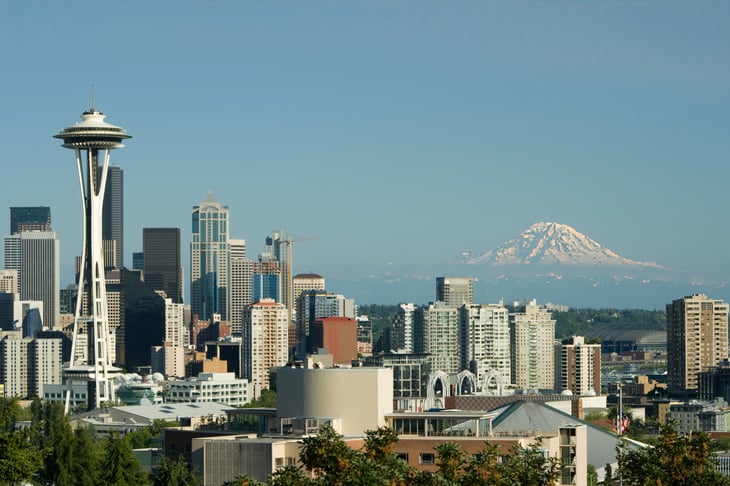
- Women’s earnings as a percentage of men’s: 76.1%
- Median annual earnings for full-time women: $57,085
- Median annual earnings for full-time men: $74,999
- Industry with the largest wage gap: Management of companies and enterprises
- Occupation with the largest wage gap: Legal occupations
4. St. Louis, MO-IL

- Women’s earnings as a percentage of men’s: 75.0%
- Median annual earnings for full-time women: $44,670
- Median annual earnings for full-time men: $59,521
- Industry with the largest wage gap: Finance and insurance
- Occupation with the largest wage gap: Firefighting and prevention, and other protective service workers including supervisors
3. Salt Lake City, UT
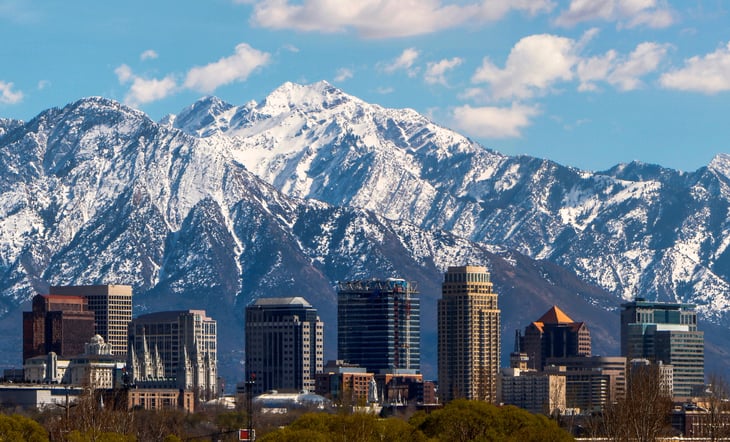
- Women’s earnings as a percentage of men’s: 74.7%
- Median annual earnings for full-time women: $41,816
- Median annual earnings for full-time men: $55,974
- Industry with the largest wage gap: Agriculture, forestry, fishing, and hunting
- Occupation with the largest wage gap: Law enforcement workers including supervisors
2. Detroit-Warren-Dearborn, MI
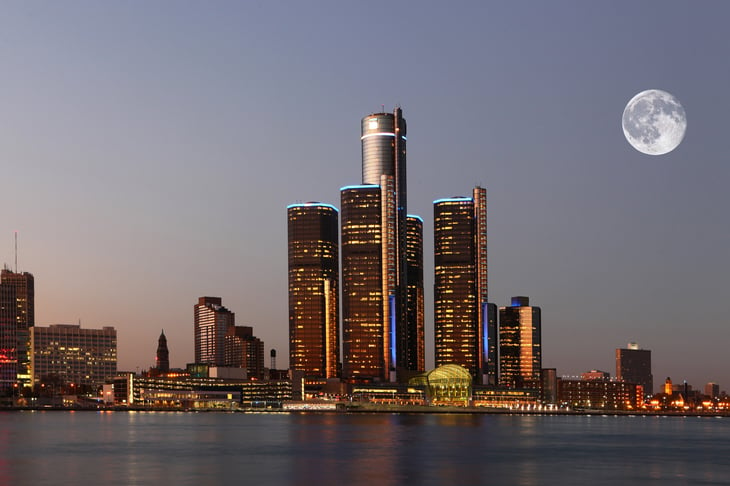
- Women’s earnings as a percentage of men’s: 74.0%
- Median annual earnings for full-time women: $44,694
- Median annual earnings for full-time men: $60,385
- Industry with the largest wage gap: Agriculture, forestry, fishing and hunting
- Occupation with the largest wage gap: Legal occupations
1. San Jose-Sunnyvale-Santa Clara, CA
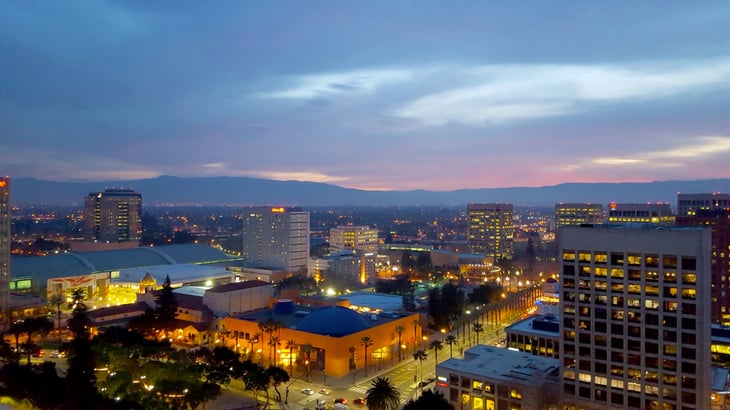
- Women’s earnings as a percentage of men’s: 72.7%
- Median annual earnings for full-time women: $70,559
- Median annual earnings for full-time men: $97,075
- Industry with the largest wage gap: Finance and insurance
- Occupation with the largest wage gap: Sales and related occupations
Detailed findings & methodology

The large metros with the biggest gender pay gaps are spread out across the U.S. The San Jose metro area boasts some of the highest wages in the country but also has the biggest gender pay gap among large metros, with women earning less than 73 percent of men’s earnings.
Utah, Texas, the Midwest, and the South are home to many of the small and midsize metros with the largest gender pay gaps. Gender pay gaps tend to be more pronounced in small and midsize metros than in large metros, with women in many small metros earning at least 30 to 40 percent less than men. The metro area with the biggest gender pay gap is Lake Charles, Louisiana, where the ratio of women’s earnings to men’s earnings is 54 percent, meaning the gender pay gap is 46 percent.
To determine the metros with the biggest gender pay gaps, researchers at Self Financial analyzed the latest data on earnings from the U.S. Census Bureau’s 2019 American Community Survey. The researchers ranked metro areas according to the ratio of full-time working women’s earnings to full-time working men’s earnings. Metros with bigger gender pay gaps have lower ratios of women’s earnings to men’s earnings. In the event of a tie, the metro with the lower median annual earnings for full-time women was ranked higher. Researchers also calculated median annual earnings for full-time men, the industry with the largest wage gap, and the occupation with the largest wage gap.
Only metropolitan areas with at least 100,000 people were included in the analysis. Additionally, metro areas were grouped into the following cohorts based on population size:
- Small metros: 100,000–350,000
- Midsize metros: 350,000–1,000,000
- Large metros: more than 1,000,000






Add a Comment
Our Policy: We welcome relevant and respectful comments in order to foster healthy and informative discussions. All other comments may be removed. Comments with links are automatically held for moderation.